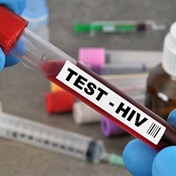Plenty, as a panel of eminent HIV/AIDS researchers pointed out yesterday at the opening press conference of the 2007 International AIDS Society (IAS) Conference on HIV Pathogenesis, Treatment and Prevention in Sydney.
Flood of HIV research
The flood of scientific abstracts (over 3 200) submitted to the conference, is impressive, not only in number but in subject range and technicality – an indication of how HIV research has accelerated and broadened in recent years.
Thanks to such studies, the world is no longer facing the pandemic armed with only condoms and abstinence – though these maintain their place among the most important weapons available. IAS president Pedro Cahn emphasised at the press conference yesterday that the aim of Sydney 2007 “is not to set aside classical socio-cultural methods, but to complement them with biomedical ones.”
But, as Sharon Lewin, President of the Australasian Society of HIV Medicine added: “No aspect of treatment and prevention is relevant without research to point the way forward.” To this end, the IAS has formulated the Sydney Declaration, a call for governments and donors to allocate 10% of all HIV funding to research.
What we have against HIV right now
Condoms, used correctly, are still one of the best, cheapest methods for preventing HIV transmission. The pandemic has elevated this humble barrier method – previously often perceived as something of a dirty joke best kept out of sight – to a visible, vital tool in the fight against HIV.
Read more: Interactive guide on how to use the male condom
The female condom
Changing behaviour. Educating and encouraging people to practise safer sex, and change societal norms – such as gender inequality, homophobia and HIV-related stigma - that contribute to HIV risk, remains an essential element of the battle. But a frequently-repeated conviction by HIV experts at the IAS 2007 is that human behaviour is not changing rapidly enough to save millions of lives; other interventions are needed if the epidemic is to be checked.
Anti-retrovirals (ARVs) are drugs that help destroy HIV or interfere with its ability to make copies of itself. There are four classes of ARVs currently available:
- Nucleoside Reverse Transcriptase Inhibitors (NRTIs). They interfere with the protein Reverse Transcriptase, which HIV needs to replicate.
- Non-nucleoside Reverse Transcriptase Inhibitors (NNRTIs). They also block RT, in a slightly different way to NRTIs.
- Protease Inhibitors. They block the function of another protein – protease - essential for HIV replication.
- Entry Inhibitors. They stop HIV entering target cells in the first place. There is currently only one licensed entry inhibitor available, called a fusion inhibitor.
ARVs are used to treat people who are HIV-positive, and in certain cases, to help prevent infection in HIV-negative people. ARVs are given to HIV-positive pregnant women during pregnancy and delivery, and to their babies following birth, to reduce the risk of mother-to-child transmission.
HAART (Highly Active Antiretroviral Treatment) involves using several ARVs together in a treatment regimen. HAART helps the immune system to continue to produce the white blood cells needed to fight opportunistic infections.
Post-exposure prophylaxis (PEP) involves short-term use of ARVs to prevent HIV infection in people who have recently been exposed (such as health care workers through needlestick injuries, women who have been raped, or sex where the condom breaks). PEP reduces the risk of infection, but is not 100% effective.
Promising new contenders
Male circumcision is nothing new, but what is revelatory is that it’s been shown to reduce the risk of HIV transmission by about 60%. In March 2007, WHO and UNAIDS recommended that, based on studies done in Kenya, Uganda and South Africa, circumcision be considered an important intervention to reduce the risk of HIV infection in heterosexual men.
The following HIV treatment and prevention methods are not yet available, but are exciting research areas expected to yield results over the next few years:
Vaccines. The holy grail of HIV research is looking increasingly like a possibility - if not to prevent HIV infection completely, then to slow down its advances in the body. It’s expensive (IAS estimates that at least US $1.2 billion per year is needed to speed up the search for a safe, effective vaccine), but, given the historical precedents of diseases like smallpox and measles, say epidemiologists, it’s the best way to combat such epidemics.
Microbicides work by destroying microbes (HIV and some other STIs) or disabling them so they can’t establish themselves in the body. They would be applied in a gel, foam or ring to the vagina.
New classes of ARVs
In addition to improvements in existing ARVs, there are two new classes being developed:
CCR5-antagonists block the CCR5 co-receptor, the virus’ main entry route into the cell. Earlier this year a US Food and Drug Administration advisory panel recommended accelerated approval of the first CCR5-antagonist.
Integrase inhibitors interfere with the integrase enzyme, which helps integrate HIV’s genetic material (RNA) into the nucleus of cells. Integrase inhibitors are currently being tested.
Pre-Exposure Prophylaxis (PrEP) involves HIV-negative people taking antiretrovirals before engaging in behaviour (such as unprotected sex or sharing needles) that puts them at risk for HIV infection. PrEP is controversial, as opponents feel it might give people a false sense of security and encourage risk-taking behaviour. Large-scale clinical trials are underway to determine PrEP’s safety and efficacy.
- Olivia Rose-Innes, Health24, July 2007
Information sources:
Global Healthfacts.org
UNAIDS/WHO AIDS Epidemic Update




 Publications
Publications
 Partners
Partners










